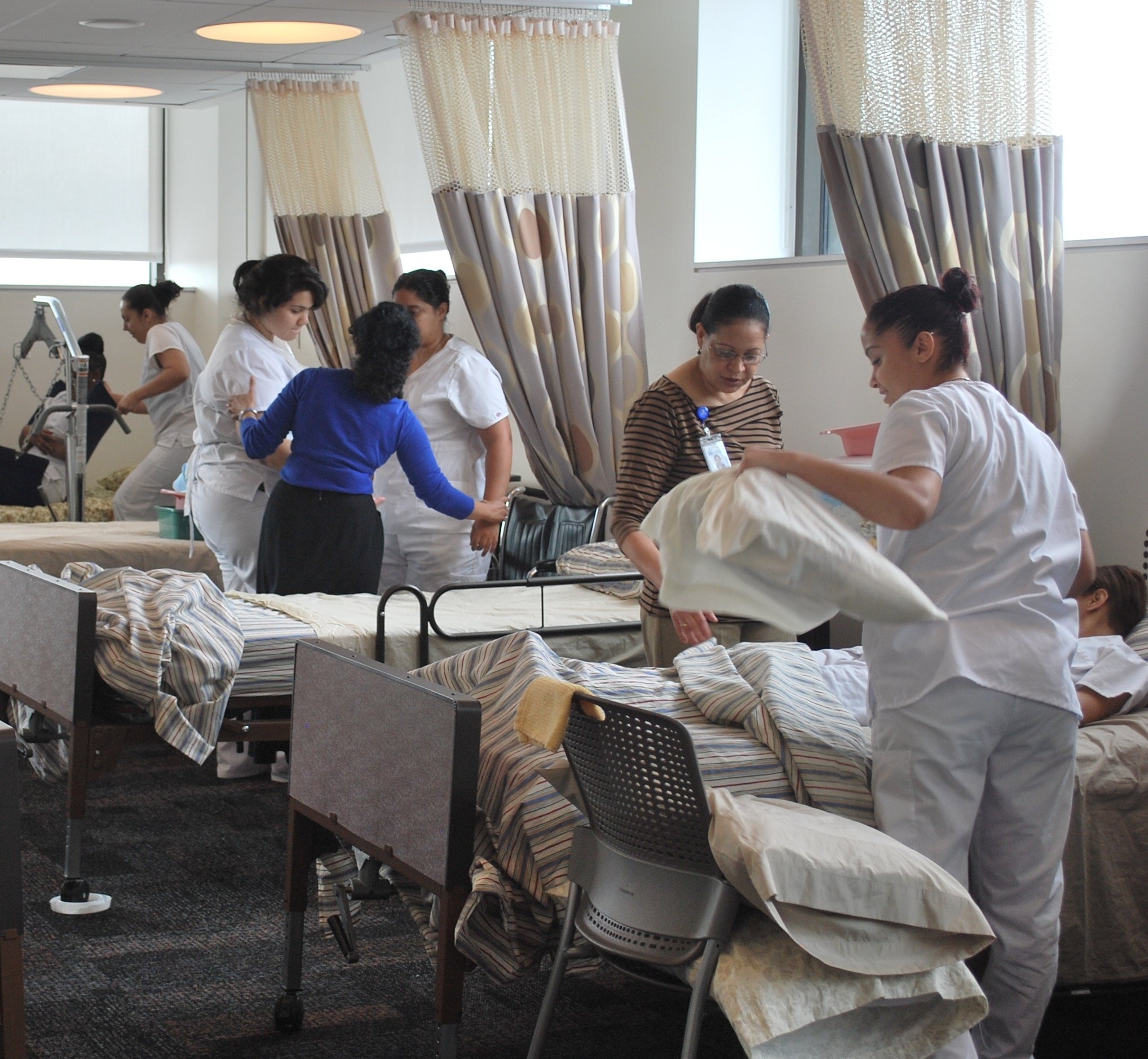Research Overview
Disparities in health, wealth, income, and social class are on the rise and accumulate over the life course. Cumulative advantages and disadvantages shape work quality, retirement income security, health, and longevity in older ages. The NYRDRC seeks to help social insurance programs adapt to and ultimately reduce and eliminate large and growing disparities by better understanding the role of the larger political economy; the geographical divides between urban, suburban, and rural places of aging; the workplace; the pressures of severe heat, cold, and storms brought on by climate instability; and employers' needs and strategies.
Meeting the needs of the older population in the United States requires a multifaceted approach that addresses the root causes of disadvantage and promotes equitable access to resources and opportunities. Public programs such as Social Security OASDI, SSI, Medicare, and Medicaid are critical for supporting the well-being of older adults, particularly those from disadvantaged backgrounds. These programs provide income support, access to healthcare, and social safety net services that help reduce poverty and inequality in old age. However, each of these programs is challenged by the increase in numbers of older adults, combined with the socioeconomic diversification of people over the age of 65; as well as the changing age structure of the population. We must therefore re-examine the existing rules and financing of retirement and healthcare.
Research Topics
Economic Security & INEQUALITY
As disparities in income and wealth increase, so do unequal outcomes among older adults.
Work & Aging DISPARITIES
Discrimination in the labor market causes long-lasting negative and cumulative impacts.
Healthcare Costs & Caregiving
Disparities in access to healthcare and social services reinforce and exacerbate social and economic disadvantages over people’s lifetimes.
CLIMATE & AGING
Climate change, including extreme weather events, poses particularly dangerous challenges for aging adults.
Who Does Social Security Leave Behind?
While the Social Security system is the U.S.’s biggest and most effective social welfare and antipoverty program, not everyone gets the benefits they need and have earned.
As disparities in income and wealth increase in the U.S., unequal outcomes are also rising among older Americans. Inequalities in job security and quality intertwine with health, income, wealth, and socioeconomic status and class to produce negative impacts on the well-being of older adults. These disparities are particularly pronounced among older adults from minority racial and ethnic groups, low-income households, and immigrant populations.
As people age, persistent and increasing discrimination in the labor market widens disparities in employment and earnings. Many of the same people on the losing end of the labor market are also hurt by other structural barriers, including racism and other prejudices based on identity, as well as impediments in educational opportunities, financial markets, and housing choices. These inequalities have long-lasting negative and cumulative impacts on economic security, health, disability, and well-being, leaving disproportionate shares of discriminated groups in poverty, poor health, and disability. Groups experiencing labor market and other discrimination include African Americans, Latinx, people with disabilities, immigrants, women, LGBTQ+ people, older workers, and people with felony convictions.
Similarly, a lifetime of work that is more dangerous, lower paying, and/or that reinforces subordination exacerbates long-term health divides and affects health and well-being in old age. The NYRDRC seeks to investigate the mechanisms for the observed effects to explore ways that Social Security and other public and private systems can help.
As both research and people’s health conditions change over time, care must be continually reevaluated and updated. Substantial social science, medical, and gerontological research show that social and economic disadvantages accumulate over people’s lifetimes, along lines of race, gender, and socioeconomic status. Disparities in access to healthcare and social services reinforce and exacerbate these disadvantages. Despite progress in closing gaps in educational status, household income, and healthcare coverage, substantial racial/ethnic health and mortality inequalities persist. Evidence suggests that the COVID-19 pandemic has exacerbated aging and early retirement, requiring further study. Disparities and gaps in elder care also require attention, as do the caregivers and families who provide care for elders.
Projects
Co-resident Grandparents’ Mortality Risk and Racial-Ethnic Variations
Who Pays for Elder Care? An Analysis of the Financial Burden on Caregivers and Families
Home Care Needs and Sources of Care Among Social Security Disability Beneficiaries
Do spousal caregivers claim Social Security early to replace or supplement their income?
The Social Security system, including disability insurance, is America’s biggest and most effective social welfare and antipoverty program. Without Social Security, 22.5 million more people would be in poverty, including 16.1 million people aged 65 or older. But not everyone gets the benefits they need and have earned. Researchers have shown that lower-income earners, particularly those without retirement plans or pensions, lose significant Social Security benefits by collecting early due to financial pressures. Still others are ineligible due to the nature of their employment. Other barriers to Social Security include lengthy and complicated forms, issues about digital access, competence, and trust; and discouraging or discriminatory experiences for recipients who are LGBTQ+, gender diverse, immigrants, or formerly incarcerated.
Disabilities exacerbate socioeconomic and health disparities. People with disabilities experience discrimination in the labor market and in the healthcare system, putting them at a disadvantage in lifetime earnings, retirement security, and long-term health. Likewise, inequalities in health and disability based on socioeconomic status increase the risk of low earners requiring long-term care, which is generally not covered by Medicare. Seniors aged 65 and older who require expensive nursing home care are particularly at risk of exhausting their resources. Disability can happen to anyone, but the risk of a disability and the severity of its consequences can vary by many factors: health history, occupation, and access to healthcare for an illness or after an injury—factors that vary by one’s gender, race, and region of the country.
Climate change and aging intersect in profound ways, posing significant challenges for the environment and society. Extreme weather events disproportionately affect older adults who face challenges including complex medical conditions that can impair physical, sensory, and cognitive abilities; reliance on caregivers and medical systems that may be disrupted during disasters; decreased agility and mobility due to normal aging processes; and cognitive impairments. Urbanization trends and social determinants including economic insecurity and substandard housing exacerbate the impact of climate disasters on older adults. Moreover, cities are incredibly diverse, but this places certain demographic groups, including immigrants and communities of color—disproportionately affected by chronic health conditions—at increased risk of the impacts associated with climate change.
Researchers
-
Janet Gornick
-
Sarah Bruch
-
Jess Hardie
-
Frank Heiland
-
Na Yin
-
Duygu Basaran Sahin
-
Sanders Korenman
-
Rosemary Hyson
-
Ruth Finkelstein
-
Jennie Kaufman
-
Christian González-Rivera
-
Jessica Forden
-
Siavash Radpour
-
Teresa Ghilarducci
-
Hongwei Xu
-
Mark Brennan-Ing
-
Joseph van der Naald
-
Jasmine Manalel
-
Yiyi Wu
-
Mara Sheftel
-
Deborah Balk
-
Tony Webb







